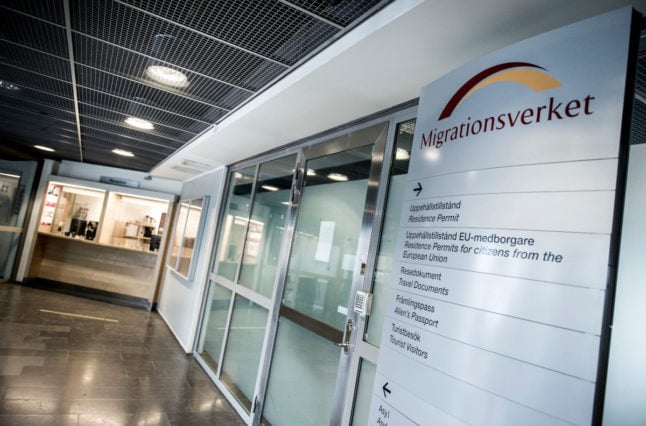The figures, released on Thursday, include all incidents reported as crimes with the police, prosecution authority and other authorities tasked with investigating crimes in Sweden. They include incidents later shown not to be crimes following investigations.
In total, 1.51 million crimes were reported in Sweden during 2017, a slight increase (4,010 more) on 2016.
The category with the biggest increase was crimes against the person, with the individual crimes of fleeing the scene of a traffic accident, computer fraud, possession of narcotics and infliction of damages (other than graffiti) growing most.
A total of 287,000 crimes against the person were reported last year – four percent more than 2016. According to Brå that is in part because of the creation of a new crime category, “unlawful use of identity” (olovlig identitetsanvänding) of which 27,600 instances were reported.
The number of sex crimes reported in Sweden increased by eight percent (1,600 reports), with the number of reported rapes in particular increasing by 10 percent – 663 reported rapes more than 2016 and reaching a total of 7,230.
READ ALSO: Swedish police improves rape processing rate
Reported instances of sexual molestation also grew by three percent (326 reports) to 10,800 and reported instances of sexual coercion and exploitation by seven percent (1,330 reports).
Mid Sweden University Criminologist Teresa Silva told The Local that the statistics should be treated with care.
“We always have to be careful with analyzing reported crimes. We don't know from the reported crime statistics whether the crime has actually occurred more, or if it's just that people report it more. They are always tricky, you have to think beyond the statistics themselves. Years ago these kind of crimes, sex crimes, were not spoken about and had stigma attached to them.”
“So what do these stats not tell us? Detailed characteristics of the victims for example – we don't know their demographic and social profile, or if more immigrants are reporting these crimes after becoming more integrated in Sweden and aware that they can report them,” she added.
In Sweden’s three biggest cities the picture is mixed. In Stockholm the number of reported rapes increased by 177 to 782 reports, while in Malmö (down six to 209) and Gothenburg (down eight to 369) they decreased.
A 10 percent overall increase in reported rapes over one year should be cause for further investigation rather than something to draw conclusions from in itself, criminologist Silva argues.
“If there's a ten percent increase in a year, something has occurred, but what is it? We don’t know without looking over more years. Will it stabilize? Is it continually increasing?”
According to Brå, the number of reported rapes in Sweden increased by 34 percent in the decade between 2008 and 2017. Between 2005 and 2011 a steady increase was in part due to changes in sexual assault laws meaning more crimes previously classified as sexual exploitation were classified as rape. After 2011 the rate varied between a low of 5,830 and a high of 6,700 in 2014 before reaching 7,230 in 2017.
“The reported crime figures should mainly be used as an alert towards something – they should make you ask what may be happening, then further research it. So with reported sex crimes increasing, the profiles of the people reporting the sexual assaults should be looked at, as well as the profiles of the perpetrators,” Silva said.
“The figures should point us in the direction of further investigations on that type of crime, then at the end of the investigation you draw conclusions on what is or isn’t happening.”
Earlier in January the Swedish government asked Brå to research why the number of reported rapes in the country is increasing, and explore whether the change is situational, to do with certain groups of perpetrators, or linked to a rise in certain types of sex crimes.
READ ALSO: Swedish government orders investigation into rise in reported rapes
Opposition politicians from the Moderates and Centre Party responded to the new preliminary figures by calling for harsher punishment for those convicted of rape. Social Democrat Justice Minister Morgan Johansson told tabloid Expressen he believes there is cross-party consensus on planned government measures including reforming laws in the area and tougher sentencing.
Fylls med avsky över de förövare som utför dessa brott, men också stolthet över de kvinnor som har kraft att anmäla. Deras mod behöver mötas av politisk handlingskraft som kan leda till förändring.
— Annie Lööf (@annieloof) January 18, 2018
At the other end of the spectrum in Brå's new preliminary statistics for 2017, the biggest decrease in reported crimes was in the theft and infliction of damage categories.
Assault also saw a decrease of five percent, down to 83,400 reported instances. Assault on men over the age of 18 dropped by nine percent, and assault on women in the same age bracket dropped by four percent.



 Please whitelist us to continue reading.
Please whitelist us to continue reading.